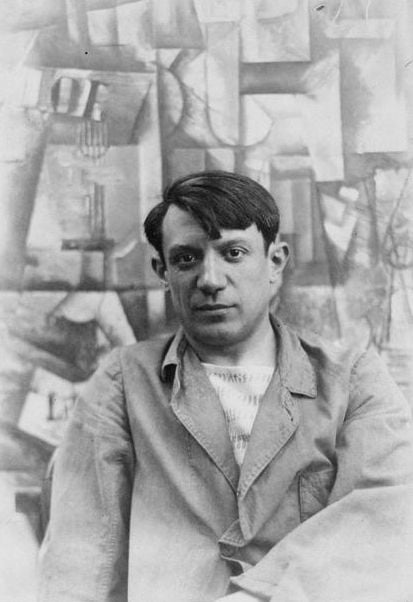Artwork Attributed to Picasso Discovered in Maine Closet After 50 Years
The long-forgotten piece was likely a preparatory sketch for a huge stage curtain for the 1919 Russian ballet “Le Tricorne”
:focal(400x293:401x294)/https://tf-cmsv2-smithsonianmag-media.s3.amazonaws.com/filer/5b/e4/5be44e08-3fc3-4ef6-9827-4eb480c179d2/picasso_painting.jpg)
A New England homeowner received a shock recently when they rediscovered a rare Pablo Picasso work in their relative’s Maine home. The framed, 16- by 16-inch piece of paper, inscribed at the bottom right with the artist’s signature, had sat in a closet for 50 years, the unnamed individual writes in a statement published on LiveAuctioneers.com.
After spending decades hidden away, the surprising find sold at auction last Saturday for more than $150,000, reports Travis Andersen for the Boston Globe. The work was auctioned off alongside more than 550 paintings, sculptures and other items recovered from private estates in Massachusetts, New Hampshire, Maine and Connecticut, notes John McInnis Auctioneers in a separate statement.
In their statement, the seller—who has chosen to remain anonymous—says that their grandmother and great-aunt both studied art in Europe during the 1920s. Their aunt reportedly collected “rare books and art.”
“Each [woman] led an interesting life with uncommon travels which was afforded to them through their uncle who owned mills in Maine,” the statement explains. “… This painting was discovered in a house owned by my great aunt which was passed down to her from her uncle in the late 1930s.”

The seller adds, “There were several paintings kept in a closet for 50 years (including this example) which were left by her at the time of the passing of the house to my father and now to me.”
Picasso made a name for himself in early 20th-century Europe by experimenting with Cubism. His geometric paintings, from Guernica to Les Demoiselles d’ Avignon, toed the line between abstraction and figuration. But as the National Opera of Paris points out, the artist also had a long, lesser-known career as a theater designer.
According to the Associated Press (AP), experts from the Amesbury, Massachusetts–based auction house say Picasso likely created this work as a maquette, or preliminary mock-up, for a monumental stage curtain painted in 1919 for the ballet Le Tricorne (The Three-Cornered Hat). To their knowledge, auctioneers believe this work is one-of-a-kind, per the lot’s description.
It’s worth noting that the artwork has yet to be officially authenticated by the artist’s son and sole authenticator, Claude Ruiz-Picasso. The buyer, who also chose to remain anonymous, has at least 120 days to submit the work for appraisal.
Picasso likely created this drawing on paper during his only extended stay in London. In the summer of 1919, the Spanish-born artist traveled with Russian impresario Serge Pavlovich Diaghilev and his groundbreaking Paris-based ballet troupe Ballet Russes (Russian Ballet) to the English city, where he designed sets and costumes for The Three-Cornered Hat. The play debuted on July 22 of that year at Alhambra theater, according to Tate Britain.
The painter met Diaghilev in 1916, when the Russian instructor commissioned the artist to make costumes for his ballet Parade (1917), per the National Gallery of Australia. Picasso later married one of the troupe’s star dancers, Olga Khokhlova.
Diaghilev drew inspiration for The Three-Cornered Hat from a picaresque novel by Spanish writer Pedro de Alarcón. In a nod to his “Andalusian roots,” Picasso included bullfighters in the costume design, as well as on the stage curtain design, the Paris Opera notes.
In 1959, the curtain itself was relocated to New York City, where it hung on the walls of the Four Seasons restaurant in the Seagram Building until 2014. Following a bitter legal dispute over the fate of the 19- by 20-foot piece, a team of professional art installers carefully moved the work to its current home at the New-York Historical Society (NYHS), as Benjamin Mueller and Annie Correal reported for the New York Times in 2014 and 2015, respectively.
Per the society, biographer John Richardson once described Picasso’s design work for The Three-Cornered Hat as his “supreme theatrical achievement.”
/https://tf-cmsv2-smithsonianmag-media.s3.amazonaws.com/accounts/headshot/nora.png)


/https://tf-cmsv2-smithsonianmag-media.s3.amazonaws.com/accounts/headshot/nora.png)